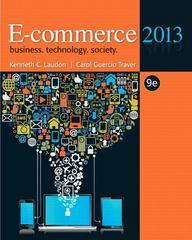

Help me here, thank you.
1 Explain why a life insurance company might need to set up non-unit reserves in respect of a unit-linked life assurance contract. 2 The following table shows (in f's) a profit testing calculation (with some of the entries missing) for three-year endowment assurance contracts issued to lives aged exactly 57 with a sum assured of 65,000 payable at the end of the year of death. Outgo terms are shown as negative entries. Expected Expected cost cost of death Profit Year Premium Expenses Interest of increasing and maturity vector reserves (*) claims 1 1,530 -50 ? ? ? -51 2 1,530 ? ? 21 3 1,530 ? 45 The mortality probability at each age is 1%. The rate of interest earned on cashflows and reserves is 6%. Reserves are calculated using an interest rate of 4%. The reserves are zero at the start and end of the contract. The interest earned on the reserve in the third year is $195. (i) Complete the table. (ii) Calculate the internal rate of return. (wii) Explain the effect that changing to a weaker reserving basis would have on the internal rate of return. (iv) Calculate the net present value using a risk discount rate of 7%. (v) Explain the effect that changing to a weaker reserving basis would have on the net present value. (* ) Allowing for interest earned on reserves.3 A profit test for unit-linked policies issued to lives aged 60 has been carried out. The expected non-unit cashflows before setting up non-unit reserves are as follows: Year Expected non-unit cashflows per policy in force at start of year -30 2 -12 3 -6 4 20 5 30 Write down an expression for the expected loss at the end of Year 1, after zeroisation of all negative cashflows. 4 A conventional 3-year endowment assurance is issued to a life aged exactly 56. The details are: sum assured 10,000 payable after 3 years or at the end of the year of death, if earlier surrender value equal to the return of premiums without interest, less 400, at the end of the year of surrender annual premium 3,250 paid at the start of each year. The company calculates its reserves for this contract on the following basis: Expenses: 30 at the start of Year 2 32 at the start of Year 3 Surrender probabilities: 4% of policies in force at the end of Year 2 only Mortality: AM92 Ultimate Interest: 2% pa (i) Calculate the prospective gross premium reserves required per policy in force at the start of Years 2 and 3, according to the above basis, using a cashflow projection approach. (ii) Calculate the expected profit arising in the second year per policy in force at the start of Year 2, assuming the following profit test experience basis: Expenses: as reserving basis Surrenders: as reserving basis Reserves: as calculated in part (i) Mortality: 75% of AM92 Select from policy outset Interest: 4% pa (iii) Explain why the expected profit calculated in part (ii) is not zero










